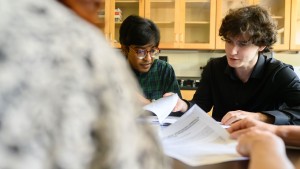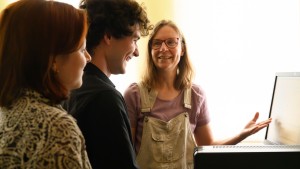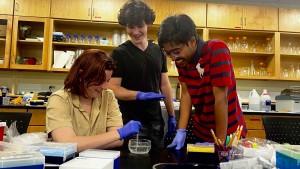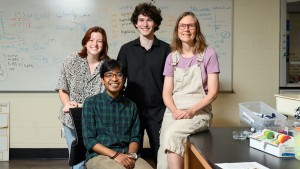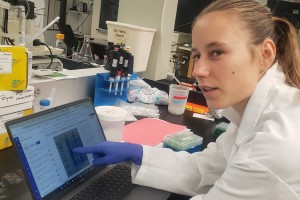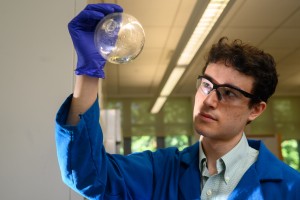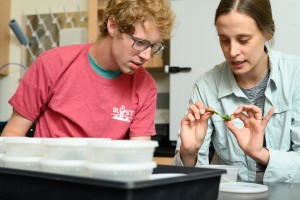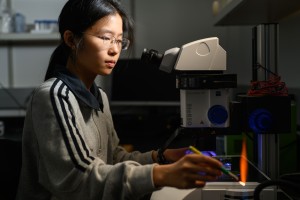Cut a California blackworm in half and something remarkable happens: the head grows an entirely new tail and the tail regenerates a complete head.
It’s the kind of biological superpower that seems like science fiction, yet it happens routinely in Assistant Professor of Biology Kathy Gillen’s research lab in Higley Hall, where Summer Science Scholar Matteo Pescione ’26 and his student colleagues spent their summer days uncovering the mysteries behind this process.
“What I really want to look at is how these worms grow back entire pieces of themselves,” Pescione ’26 explained, his enthusiasm evident.
To the average person, these California blackworms are nothing more than thin, maroon strands wriggling in pond water — inexpensive creatures that are easy to work with in the lab. But for researchers like Pescione who are studying regeneration, these simple worms might hold keys to understanding some of humanity’s most complex medical challenges, including cancer.
A biology major from the Los Angeles area, Pescione found in the College’s secluded beauty exactly what drew him away from the sprawling city. Removed from the urban frenzy of Southern California, he enjoyed his summer work in Gillen’s lab investigating the metabolic machinery that makes worm regeneration possible.
His research centers on pyruvate kinase, a crucial enzyme involved in cellular respiration, the process by which glucose is converted into energy. What Pescione is attempting to understand is how the enzyme is involved in regeneration. “My hypothesis is that upon amputation there is a lower activity of pyruvate kinase,” he explained.
The theory builds on previous lab findings: When worms are cut, they produce highly reactive molecules that likely inhibit this enzyme, redirecting glucose away from standard energy production toward a different pathway that creates building blocks for new tissue. Essentially, Pescione says, the worm’s metabolism shifts from maintenance mode to reconstruction mode.
His work this summer involved experiments where chemicals glow in response to enzyme activity. Research days alternated between reading papers and running experiments that could stretch for hours, often involving what Pescione described as “a lot of pipetting” and careful bias elimination — photographing regenerating worms, assigning them “random jumbles of letters and numbers,” then having colleagues analyze them independently.
Despite the meticulous methodology, the reality was messier than it might appear. “The (experiments) have a really hard time of working,” Pescione admitted, describing occasionally odd results requiring troubleshooting calls to manufacturers. Yet this collaborative problem-solving drives meaningful discovery, and Pescione remains enthusiastic about the research itself.
Understanding how California blackworms regenerate could unlock better cancer research models and regenerative medicine. By tackling how this enzyme changes during regeneration, Pescione is contributing to our understanding of the metabolic shifts that make healing possible — while gaining important scientific skills.
“I really recommend doing this,” he said. “It’s so much fun.”
This article was written by Marisol Hernandez ’26 as part of the Hoskins Frame Summer Science Writing Scholars program.
